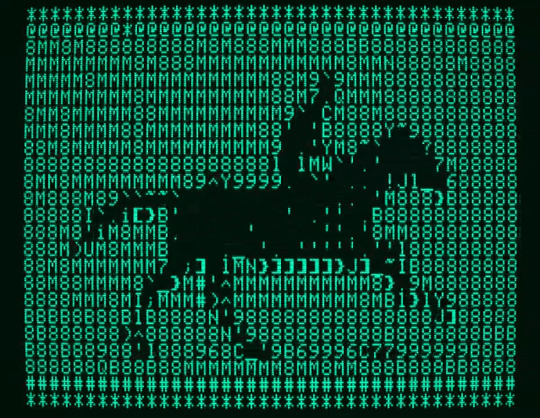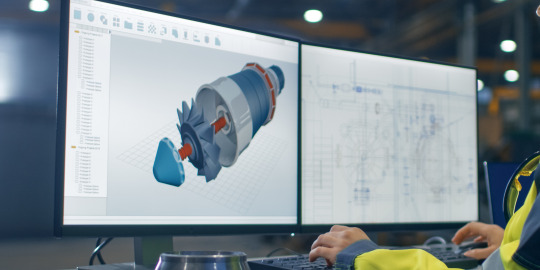#Design Technology
Explore tagged Tumblr posts
Text
Decided sharing is caring so have some earrings I made like 2 years ago(?) back in the midst of my empires hyperfixation

Some context below the cut if you’re interested (cus I am)
I wore them a couple days ago bcuz like… they’re genuinely my favourite pair of dangly earrings (Please do not ask where they’re from slash where you can buy them. These are the only pair that exist cus I made them in school.)
The vague eye shape & the rectangle was based off a designer who I cannot remember the name of but I studied her in dt (Her name started with an i, had a k somewhere and possibly ended with an i? It’s spelt weird so do forgive my memory lol)
At the time I was extremely hyperfixated on the flower husbands and this led into the flowers which were originally going to have like black dots in the middle but my teacher told me that those would be too small and instead we dropped the idea. It was laser cut and is made from acrylic.
(the tags are mostly for reach)
#design technology#british highschool#life series#the life series#trafficblr#empires smp#empiresblr#empires s1#jimmy solidarity#scott smajor#flower husbands#poppies
26 notes
·
View notes
Text
So my DT assignment (final) is due in four days. Here’s where I’m at now;
32/50 pages
3/6 sections
50 drawings
Biggest cram session yet!!! Will update tonight on how it goes.
#high school#school#ibdp student#ib studyblr#ibdp#ib diploma#design#design technology#ib dt#assignmentwriting#procrastination#i need to stop procrastinating
4 notes
·
View notes
Text
🚀 Small Footprint, Big Impact! 🚀 - Stratasys J55 3D Printer

Experience the power of Stratasys J55™ Prime – the office-friendly, multi-color, and multi-material 3D printer that brings your designs to life with precision and vibrant details! 🎨✨ Perfect for design studios, engineers, and innovators, the J55™ Prime offers high-quality prints with a compact, quiet, and efficient setup. 🔹Multi-material & full-color printing 🔹Compact & office-friendly design 🔹Unmatched realism & productivity 🔗 Learn more: https://altem.com/j55-prime/
0 notes
Text

#apple#art#computer#console#cybercore#cyber y2k#design#gameboy#game boy#meme#nintendo#photography#pink#screenshot#tech#tweet#twitter#technology#y2kcore#y2kore#y2k aesthetic#y2k core#y2k cyber#y2k design#y2k futurism#y2k#y2k nostalgia
33K notes
·
View notes
Text
It's kind of funny how Teams users have been complaining for the better part of a decade that the minimum width of the dockable chat windows is too wide, and Microsoft has basically been telling them to get fucked, then they discontinue Skype and tell all of its former users to switch to Teams, and within 72 hours of Skype going down for good, Microsoft suddenly pushes a "critical" update for Teams that gives it more flexible dockable chat windows.
4K notes
·
View notes
Text

Zero Gravity Indicators: Plushies in Space!
What are zero gravity indicators?
Did you know that some astronauts bring stuffed animals with them on their journeys to space? A zero gravity indicator (ZGI) is a plushie that is brought aboard spacecraft to demonstrate when the astronauts have reached the weightlessness of space. Even though the astronauts are strapped in their seats, the plushie will float — and viewers of the livestream will know they’ve reached space! Read on to learn about some of the plushies astronauts have taken with them to space.
Giraffiti

NASA astronaut and Artemis II commander Reid Wiseman brought a very special ZGI to the International Space Station: a toy giraffe named Giraffiti. Wiseman’s mother gifted Giraffiti to his oldest daughter when she was born. When Wiseman embarked on his first mission to space, his kids gave him Giraffiti to take with him to space.
Dinosaur

NASA astronaut Karen Nyberg made a stuffed dinosaur toy by sewing together scraps of food-packaging liners and a T-shirt. Although this dinosaur toy was not an official zero gravity indicator that didn’t stop it from floating around the International Space Station and being very cute for the cameras!
8-Ball

NASA astronaut and Artemis II mission specialist Christina Koch brought a plush 8-ball toy with her during her stay aboard the International Space Station in 2019. The toy represented the Astronaut Class of 2013, which was affectionately called the “8-balls” because of its eight members. Both NASA astronauts Nick Hague and Jessica Meir, pictured here, were members of this class.
Crane
NASA's SpaceX Crew-10 mission astronauts chose a plush origami crane as their zero gravity indicator because they are all pilots and grew up building paper airplanes. The crane is also a symbol of peace.
Cheburashka and Chimpo
youtube
English captions are available for the video.
When NASA astronaut Frank Rubio flew to the International Space Station in 2022, his cosmonaut crewmates brought aboard a stuffed animal named Cheburashka. Rubio also carried a small stuffed animal in his pocket named Chimpo. Chimpo was a stuffed animal that Rubio’s children had for almost 20 years before giving it to Rubio for him to bring aboard his flight.
Snoopy

Snoopy hitched a ride around the Moon aboard the Orion spacecraft during the Artemis I mission in 2022. Although this mission didn’t have astronauts, Snoopy was joined by a manikin named Moonikin Campos who was used to measure vibrations inside the capsule. NASA has shared an association with Snoopy since the Apollo era, when Charles M. Schulz Schulz created comic strips of Snoopy on the Moon, capturing public excitement about America’s achievements in space.
What would you take with you to space?
Now it’s your turn! People of all ages from all over the world have the opportunity to design the zero gravity indicator for the Artemis II mission around the Moon. Should the astronauts’ plush companion have wings? Scales? What would you like to see floating around the Orion spacecraft? Check out the Moon Mascot challenge to learn more! Submissions are due June 16, 2025.
#art#design#plushie#Moon#space#makers#tech#technology#NASA#Artemis#crochet#sewing#stuffed animals#kidcore#amigurumi#YouTube
4K notes
·
View notes
Text



Sanyo Healthy Capsule at Expo '70 in Osaka, Japan
#70s#1970s#design#tech#technology#retro#retro aesthetic#retro futurism#sanyo#expo '70#japan world exposition#healthy capsule#sanyo healthy capsule
5K notes
·
View notes
Text


Game Boy Color - Atomic Purple, 1998
#my edit#game boy color#gbc#nintendo#transparent#transparent design#gameboy#nintendo game boy#transparent pngs#nintendo gameboy#transparent bg#nintendocore#1998#90s#2000s#nintendo gbc#early 2000s#techcore#techcore aesthetic#y2k#y2k aesthetic#transparent tech#video games#gaming#clear tech#clear technology#90s gaming
8K notes
·
View notes
Text


ṇ̵̛̱͌̅̃͛̔o̴̮̓̀͂́̃_̴̛̲́s̷͈̋̈́̄̋͠ị̶͔̗̐͐̐̒̕g̵̛̱̘̣̑͂ņ̴̰͔̘͇̏̒̓̇͠͝a̸̜̥̩̭͋̌ḷ̶͔̖͗͋͛͛̃͆
#my art#jujutsu kaisen#jjk#jjk fanart#jujutsu kaisen fanart#gojo satoru#satoru gojo#geto suguru#satosugu#jjk gojo#eye strain/#eye horror/#like i said ik this concept has been done before and probably better than this but i hope that i did it Okay#i hope all the eye strain was not in vain gjhfgsh the amount of blue light in this image is not recommended by doctors#smh gojo ipad baby confirmed#too much screentime.png#in other news im happy i came up with smth else 2 put alongside the piece itself !!#was playing around with filters and effects and i was like ooh what does the binarization button do#makes it look like found footage is what it does i love it SO much#i almost like it better than the coloured version but i would rather die than let a day and a half of rendering go to waste#esp after i already scrapped the intended p2#still i would have posted the full b/w one side by side but it made the post look so busy and distracting and awful#so it's just geto's face ig smile :)#happy i stuck it out w this!!!#fr all i dunk on gojo gdi his aesthetic n design works so well with glitches and messed up technology#tb to tht other gojo + teal + glitches piece i did frever ago captioned smth like 'watch what you eat'#the glitch brushes in my inventory exist fr him and him alone
5K notes
·
View notes
Text

Mid-Century Radios From Genuine Plastic Radios of the Mid-Century, Ken Jupp & Leslie Piña, 1998.
15K notes
·
View notes
Text

An 80s era Apple portable/laptop computer prototype.
#apple#apple computer#apple prototypes#computers#the 80s#the 1980s#80s aesthetic#vintage computers#vintage tech#vintage technology#electronics#vintage electronics#industrial design#product design#apple products
2K notes
·
View notes
Photo

Apple II ASCII art animated horse
1K notes
·
View notes
Text
I kind of love it when websites both display relative timestamps for an unreasonably long span of time before switching to absolute timestamps and use unreasonable units for the span in question. "This post was made 37 weeks ago" under what conceivable circumstance is this a useful way to communicate that?
4K notes
·
View notes
Text
CAD Automation: Redefining the Design Landscape for Success

In the world of modern engineering and design, Computer-Aided Design (CAD) has revolutionized the way products are conceived, developed, and manufactured. As technology continues to advance, CAD automation emerges as a key player in enhancing design efficiency and fostering innovation. This blog post delves into the realm of CAD automation, exploring its significance, benefits, challenges, and potential future trends.
Understanding CAD Automation
CAD automation refers to the process of utilizing software tools and scripts to streamline various aspects of the design process. It involves automating repetitive tasks, generating complex designs, and facilitating seamless collaboration between designers and engineers. The goal of CAD automation is to reduce manual effort, minimize errors, improve consistency, and accelerate the overall design cycle.
Significance of CAD Automation
1. Efficiency Enhancement:
Automating routine and time-consuming tasks, such as dimensioning, detailing, and generating drawings, allows designers and engineers to allocate more time to creative and high-value tasks. This not only accelerates the design process but also increases productivity and reduces the risk of human errors.
2. Design Iteration and Optimization:
Automation tools enable rapid design iteration. Designers can easily generate variations of a concept, test different parameters, and evaluate multiple scenarios. This iterative process aids in identifying the most optimal design solution and fosters innovation.
3. Consistency and Standardization:
CAD automation enforces design standards and guidelines consistently across projects. This ensures that designs adhere to industry best practices and regulatory requirements, reducing the chances of errors caused by deviations from standards.
4. Complex Geometry and Customization:
Automated scripts and parametric modeling techniques enable the creation of intricate and complex geometries that might be challenging to achieve manually. Additionally, automation allows for easy customization of designs to meet specific customer requirements.
5. Collaboration and Communication:
CAD automation tools facilitate seamless collaboration between cross-functional teams. Design modifications, updates, and feedback can be efficiently communicated and integrated into the design process, enhancing teamwork and reducing communication gaps.
Benefits of CAD Automation
1. Time Savings:
Automating repetitive tasks drastically reduces the time required for design and drafting. This leads to faster project completion and quicker time-to-market for products.
2. Error Reduction:
Human errors are inevitable in manual tasks, but automation significantly reduces the risk. Consistent and standardized designs generated by automation tools mitigate the chances of costly mistakes.
3. Innovation Encouragement:
By handling routine tasks, designers can focus on exploring innovative design concepts and pushing boundaries. This results in more creative and inventive solutions.
4. Cost Efficiency:
Efficient design processes translate to cost savings. Reduced design time, fewer errors, and optimized designs contribute to lower production costs.
5. Enhanced Quality:
Automation tools ensure that designs adhere to defined standards, leading to higher-quality outputs that meet or exceed customer expectations.
Challenges of CAD Automation
While CAD automation offers numerous benefits, it's important to acknowledge the challenges that come with its implementation:
1. Initial Setup Complexity:
Developing and implementing automation scripts requires specialized skills and time. Setting up an automation workflow can be complex and resource-intensive.
2. Maintenance and Updates:
Automation workflows need continuous monitoring and updates to remain effective. Changes in design requirements or software updates may necessitate adjustments to the automation process.
3. Skill Requirements:
CAD automation demands a certain level of programming and scripting skills. Not all design professionals possess these skills, which might lead to a skill gap within the team.
4. Balancing Automation and Creativity:
While automation improves efficiency, there's a concern that excessive automation might stifle creativity. Striking the right balance is crucial to ensure that designers still have the freedom to innovate.
Future Trends in CAD Automation
The future of CAD automation holds exciting possibilities:
1. AI-Powered Design Generation:
Artificial Intelligence (AI) could play a significant role in generating design concepts based on user inputs and requirements. This could lead to the rapid creation of diverse design options.
2. Cloud-Based Collaboration:
Collaboration tools and CAD software are likely to move towards the cloud, enabling real-time collaboration between team members regardless of their geographical location.
3. Integration with Simulation and Analysis:
Automation could seamlessly integrate design with simulation and analysis tools, allowing for quicker evaluation of design performance and optimization.
4. Generative Design Evolution:
Generative design algorithms, driven by AI, could become more advanced, producing complex designs that consider multiple variables and constraints.
Conclusion
CAD automation is transforming the design landscape by freeing designers from repetitive tasks, empowering them to innovate, and enhancing design efficiency. While challenges exist, the benefits of CAD automation outweigh the drawbacks, and the continuous evolution of technology promises even greater possibilities in the future. Embracing CAD automation can position design teams at the forefront of innovation and efficiency in the rapidly evolving engineering and manufacturing industries.
ProtoTech Solutions' journey into the realm of CAD automation is a testament to the transformative power of technology. Their commitment to streamlining design processes, fostering innovation, and embracing the future sets an inspiring example for the entire design and engineering community. As ProtoTech Solutions continues to pioneer advancements in CAD automation, the design landscape stands poised for a future of unprecedented efficiency, creativity, and collaboration.
#CAD Automation#Design Efficiency#Design Workflow#Engineering Automation#Automation Solutions#Design Technology#AI-driven Design#Design Optimization#CAD Integration#Design Standards#CAD Software#CAD Customization
0 notes
Text
youtube
Moon Mascot Needed!
Have you ever wanted to design something that could fly around the Moon? This is your opportunity. The Artemis II astronauts will use a zero gravity indicator during their mission to demonstrate when the Orion spacecraft has reached microgravity. This plushie needs to be soft, small, and importantly, remind us of home. The Moon Mascot contest challenges people of all ages from all over the world to submit a design to be made by NASA’s Thermal Blanket Lab and flown aboard Artemis II. To submit a design for the contest, visit: freelancer.com/moon-mascot
#art#design#plushie#Moon#space#makers#tech#technology#NASA#Artemis#crochet#sewing#stuffed animals#kidcore#amigurumi#Youtube
2K notes
·
View notes